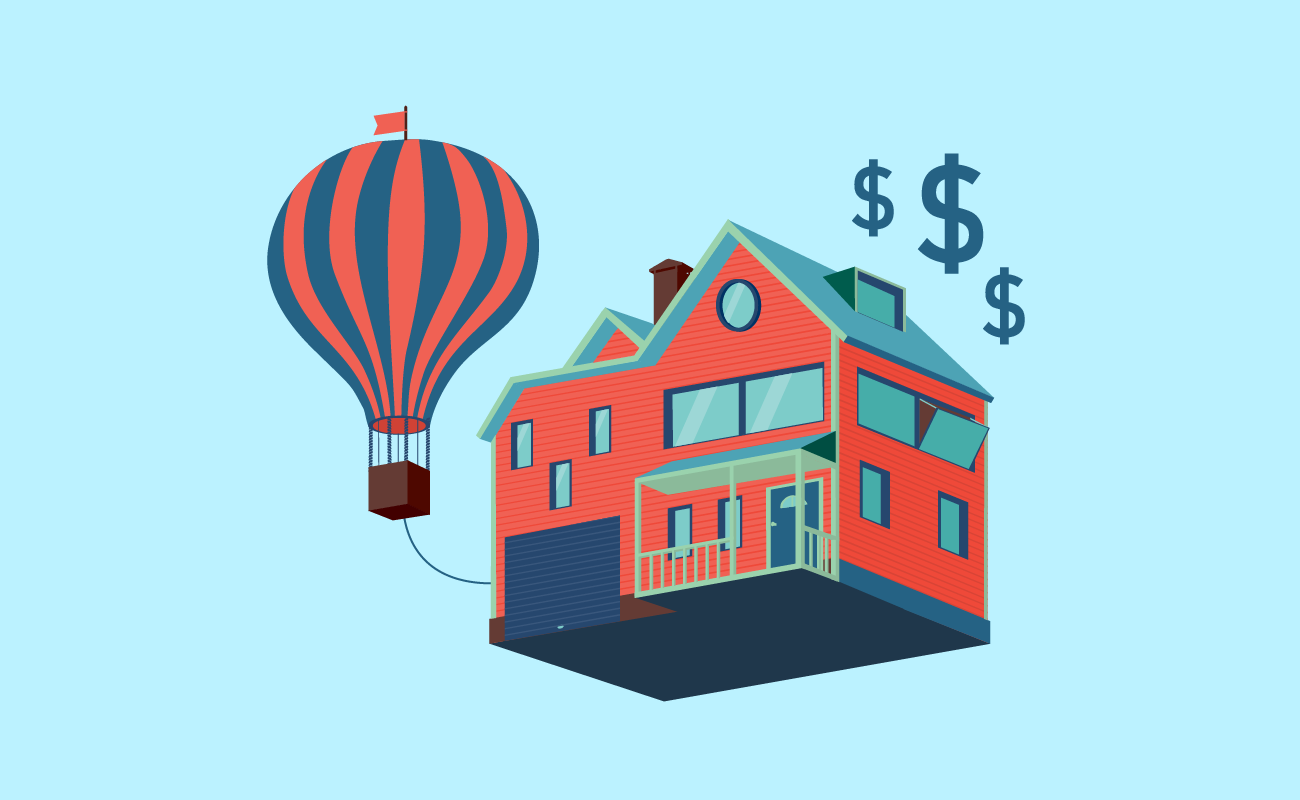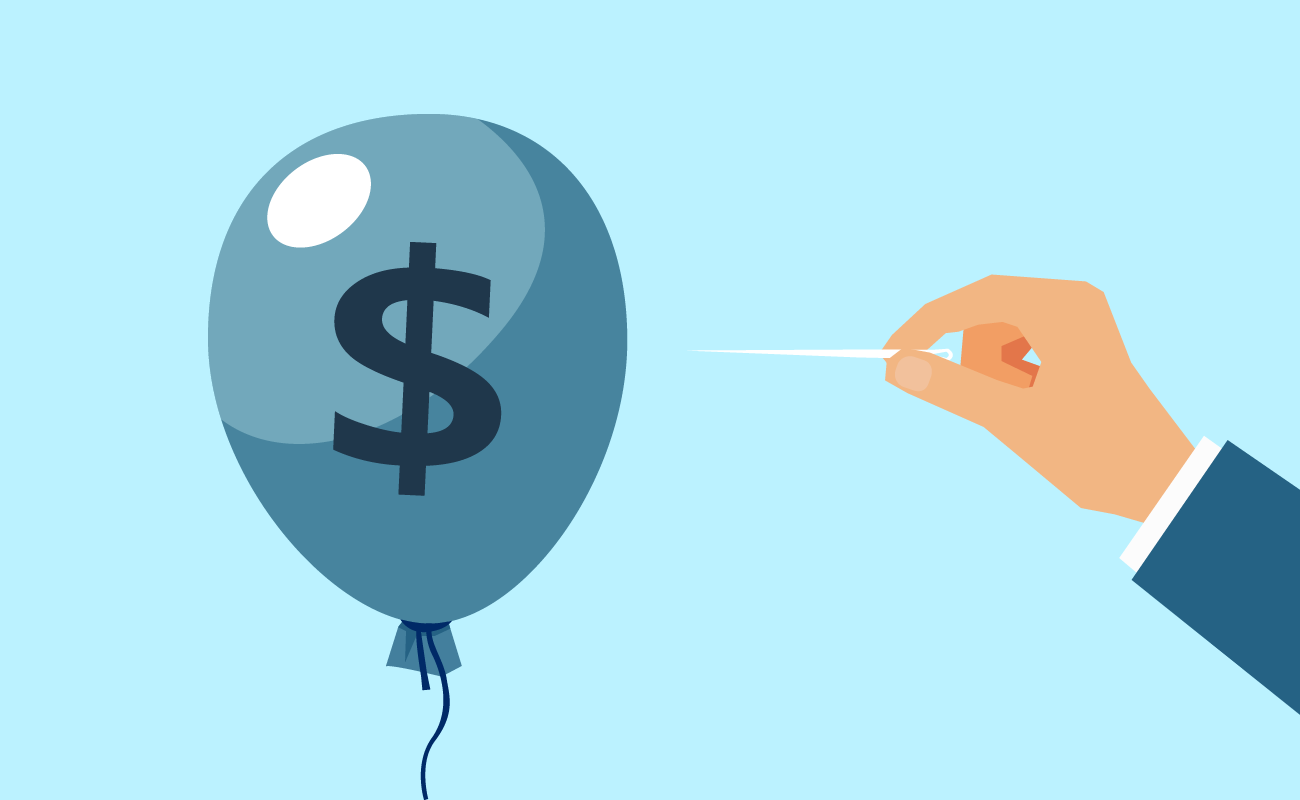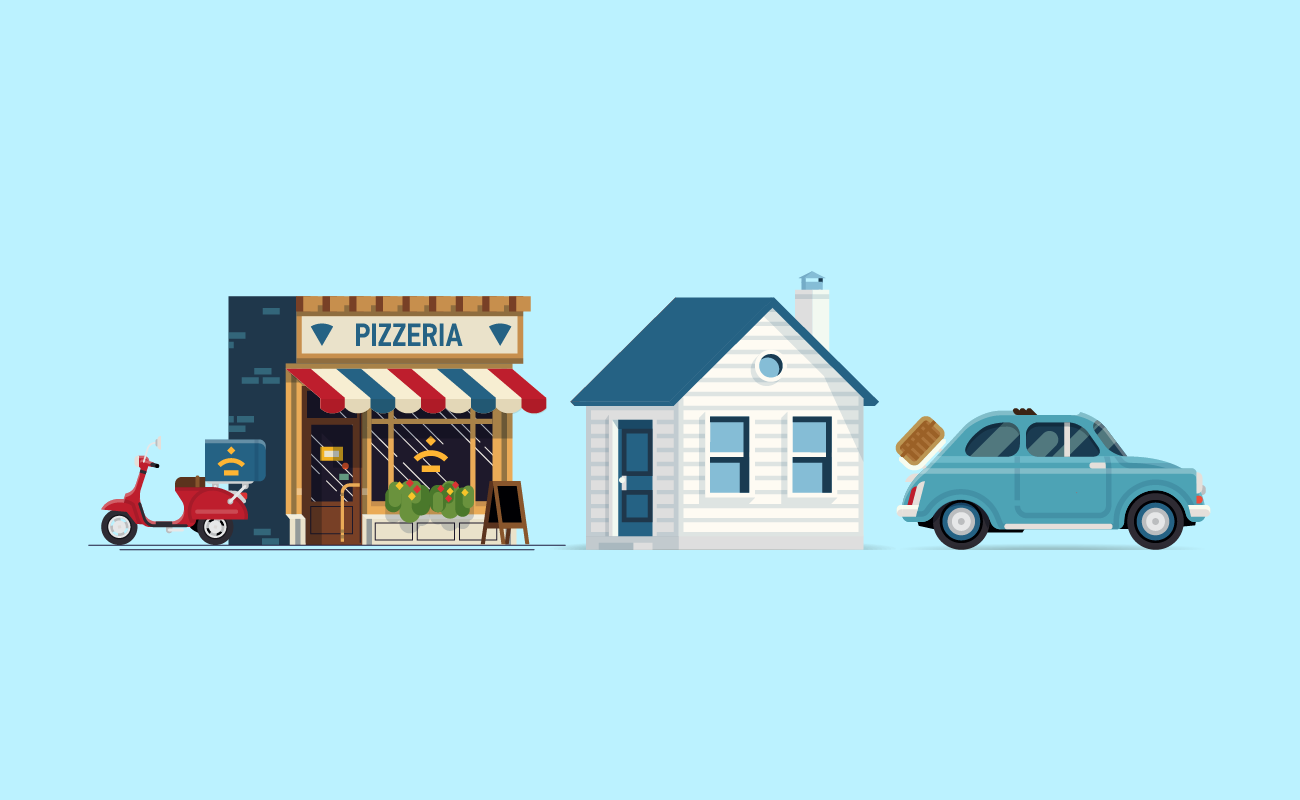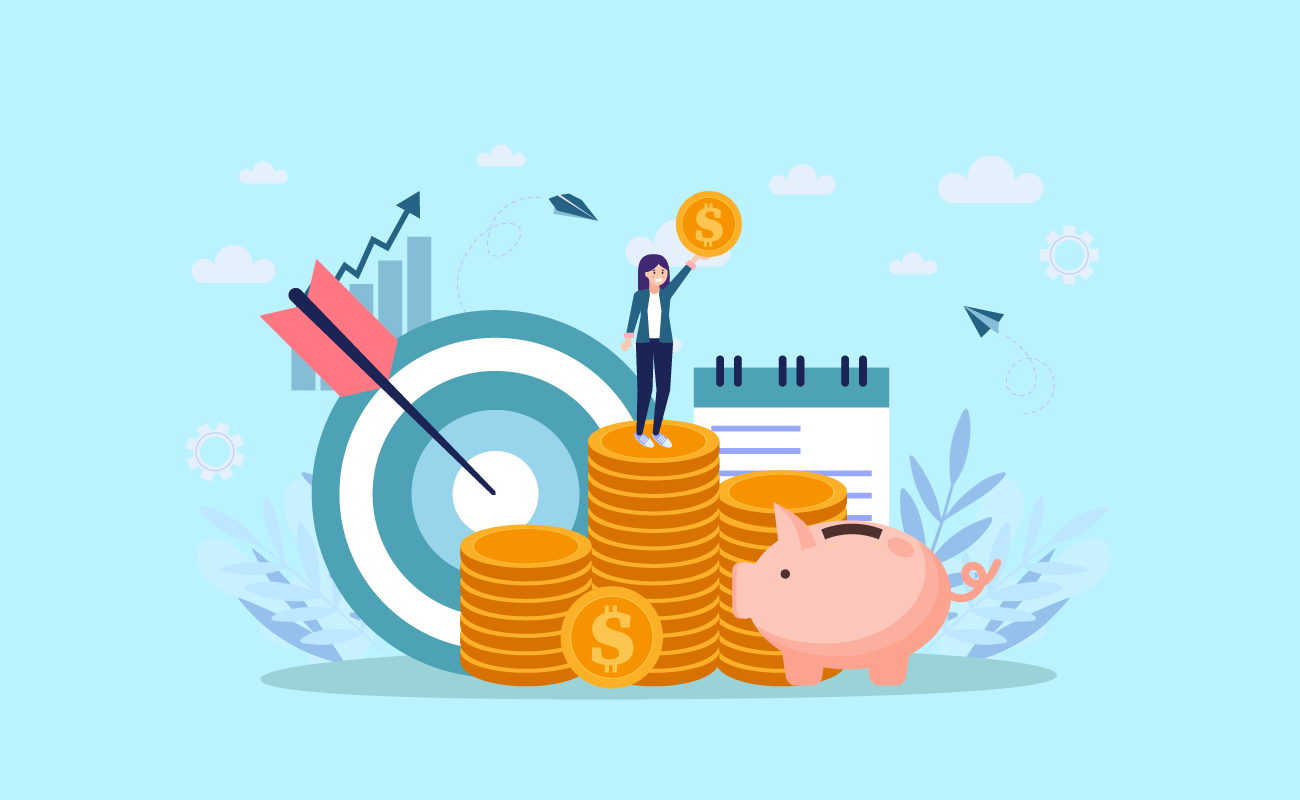
This tool figures a loan's monthly and balloon payments, based on the amount borrowed, the loan term and the annual interest rate. Then, once you have calculated the monthly payment, click on the "Create Amortization Schedule" button to create a report you can print out. This calculator automatically figures the loan amortization period based on the desired balloon payment. If you want to amortize over a specific period of years, please use our commercial loan calculator.
| Commercial Balloon Loan Providers | Rates |
|---|---|
| Freddie Mac Optigo | 6.39% – 8.01% |
| Fannie Mae | 6.49% – 7.81% |
| HUD 223(f) | 6.25% – 7.30% |
| CMBS | 6.46% – 7.95% |
| Regional Banks/Credit Unions | 6.95% – 10.50% |
| Life Insurance Companies | 6.21% – 7.11% |
| Debt Funds | 9.07% – 15.32% |
| HUD 221(d)(4) | 6.85% – 7.90% |
Note: The range of commercial mortgage rates should be considered typical. However, there are outliers on the high and low end of the range. Thus, these figures do not guarantee actual rates on a specific commercial mortgage deal.

Finding the right kind of mortgage also depends on what you intend to do with your property. Do you want to purchase your own office? Are you planning to renovate and sell a house within a year? In both these instances, balloon mortgages are an option that might work for you.
Whether you need a commercial or residential mortgage, you must get ready with a viable repayment plan. Loans such as balloon mortgages allow you make affordable monthly payments within a short term. And by the end of the loan, you must make a large payment to completely pay off your debt.
Our article below explains how balloon mortgages work and their pros and cons. We’ll also talk about different types of financing options structured with this payment schedule.

What are Balloon Mortgages?
A balloon mortgage is a financing option with a short term (e.g. 2, 5, or 7 years) and a large lump sum payment due at the end of the loan. This large amount is called a balloon payment, which pays down the remaining balance when the term ends. A balloon mortgage has a short term that does not fully amortize, but the payment is usually based on a 30-year amortization schedule.
Balloon mortgages are usually associated with commercial real estate loans. Examples of these are conventional commercial loans, as well as bridge loans and hard money loans. Commercial loans enable business owners to renovate their premises or purchase commercial property for expansion. Balloon loans are also financing options offered in residential mortgages and car loans.
Expect balloon mortgage payments to be different from traditional amortizing loans. Borrowers are usually required to make interest-only payments throughout the short term, after which the balloon payment is due. With interest-only payments, you do not have to worry about covering principal payments. Borrowers must make sure to repay the lender with a large sum by the end of the term. Otherwise, you should be able to refinance your mortgage or sell the property to pay back the lender.

Hard Money Loans and Bridge Loans
When it comes to commercial mortgages, hard money loans and bridge financing both have short terms (1 year up to 3 years). They are also paid with an interest-only payment structure. However, bridge loans offer slightly lower rates that range between 6% to 10%. Meanwhile, hard money financing usually offer commercial loans between the 10% to 18% range.

In the early 1920s before the Great Depression (1929-1933), mortgage lending was largely dominated by commercial banks, life insurance companies, mutual savings banks, and thrifts (known as Savings and Loan Associations). Most residential mortgages were commonly structured in 5-year balloon mortgages, while others were 11 to 12-year fully amortizing mortgages. Many borrowers also took a form of hybrid mortgage, financing 50 percent of the house’s value with an interest-only balloon loan, then later refinancing the remaining debt with an amortizing loan to extend the term.
The early payment structure was based on the assumption that borrowers would have enough available credit to repay the mortgage. Lenders and borrowers expected asset prices to rise infinitely, and tended toward refinancing their loans. It left homeowners with no choice but to make large payments, most notably by the end of the term. If they could not pay the large sum, they kept on refinancing. This made consumers vulnerable to default and the risks of tightened credit, which eventually led to mass foreclosures. By 1933, around 40 to 50 percent of all residential mortgages in the United States were in default.
In an effort to strengthen the residential mortgage market, Congress passed the National Housing Act of 1934. This paved the way for two new agencies: the Federal Housing Administration (FHA) and the Federal Savings Loan Insurance Corporation (FSLIC). The FHA went on to set restrictions on interest rates and terms, and required fully amortizing loans. Mortgage terms were changed to have options longer than 15 years. The new loan structure and terms would eventually mitigate much of the old mortgage’s risky payment structure. Today, the most common payment term is a 30-year fixed-rate mortgage.

The Creation of Fannie Mae and Freddie Mac
The government instituted the the Federal National Mortgage Association (FNMA) in 1938, known as Fannie Mae today. It was tasked to purchase mortgages issued under the FHA to create a secondary market for home loans. Later on, the Federal Home Loan Mortgage Corporation, or Freddie Mac, was chartered in 1970 by the Congress to provide further liquidity and affordability within the housing market.
Balloon payments are a loan feature frequently found in commercial and residential mortgages. For home loans, they usually come in short terms of 5 to 10 years. Meanwhile, commercial real estate loans can be as short as 1 year to 3 years, while others can be 10 years. Balloon loans with short terms are considered high-risk to lenders. For this reason, bridge loans and hard money loans typically have higher rates than traditional commercial loans.
The monthly payments are not fully amortized, which means the short term does not cover the entire loan repayment. Borrowers usually make monthly interest-only payments, after which they pay the remaining balance with a lump sum amount once the term ends. You can also make monthly principal and interest payments. And despite its short duration, the payments are calculated based on a full amortization schedule under a 30-year mortgage.
In a balloon loan, the monthly payment is not as high as regular amortizing loans with a short term. However, borrowers must prepare for the large amount to completely pay down the mortgage.
To give you a better idea, let’s assume you took a balloon mortgage for a commercial property. The loan amount is $800,000 with an 8 percent APR. You must make the balloon payment by the end of the 3-year term.
Using the calculator above, let’s estimate your monthly principal and interest payment, total monthly payment, total interest cost, and ending balloon payment.
Balloon mortgage amount: $800,000
Interest rate: 8% APR
Term: 3 years
| Payment Type | Amount |
|---|---|
| Principal and interest payment | $5,928.82 |
| Total monthly payments (P&I) | $213,437.4 |
| Interest-only payment | $5,386.69 |
| Total interest cost | $188,999.38 |
| Ending balloon payment | $786,023.60 |
Based on the table above, your monthly principal and interest payment will be $5,928.82, with total monthly payments amounting to $213,437.44. If you arrange for interest-only payments, it will be $5,386.69, and your total interest charges will be $188,999.38. By the end of the term, you must get ready with a balloon payment of $786,023.60. It’s a huge sum, so you must prepare enough funds before you decide to take this type of loan.

Balloon Mortgage Eligibility
In regulation Z of the Truth in Lending Act, banks are required by law to strictly investigate a borrower’s ability-to-repay (ATR) a mortgage. This includes loans with a major balloon payment. Prior to Regulation Z, banks did not thoroughly evaluate an applicant’s ability to make large lump sum payments. Lenders only based ATR on records showing previous payments.

Balloon mortgages do not automatically shift to an amortized monthly payment schedule once the term is through. If you cannot make the balloon payment, your next recourse is to refinance your mortgage into a longer term, or to sell your asset. Otherwise, you’ll end up defaulting on your loan.
Refinancing allows you to pay off your large balance in installments, giving you enough time to reduce it gradually. This is a viable strategy that can help you repay your lender without defaulting on your mortgage. Borrowers should start looking for refinancing at least a year of 6 months before the balloon mortgage ends.
Refinancing is essentially taking out a new loan to replace your current one. This helps you lower your rate and extend the term so you can make payments you can afford. That said, you must make sure you are qualified for refinancing. To do so, you must have a high credit score, a history of timely payments, and low outstanding debt. Likewise, a low credit score lessens your chances of refinancing your mortgage.
If you cannot make the balloon payment, another option is to sell your asset. This is ideal for people who who have no long-term plans of living in a house or occupying a commercial property. You can use the money from the sale to make the balloon payment.
The idea is to sell the property after its market value appreciates. Some sellers, such as professional house flippers, renovate property and sell it for a higher profit. In this case, it assumes your property’s value is high enough to pay off the remaining balance.
On the other hand, if you have a declining housing market, selling your property may not raise enough funds to pay your balloon loan. During the 2008 mortgage crisis, many homeowners had difficulty selling property. Despite making a sale, most homes had lower value compared to their original mortgage. These people were forced to sell homes at a lower price, which was not enough to pay off their mortgage.
So before selling your property, take note of market conditions. It’s also better to have enough funds in case refinancing or selling your property does not fall through.

Balloon payments are often found in loans with short terms. These require a large lump sum mount by the end of the term to completely pay off the lender. The following is a list of different types of loans and how they utilize balloon payments:
Balloon payments are often used in commercial mortgages. This type of financing helps businesses purchase property. It’s also used to upgrade an existing commercial property and finance business expansion. Commercial mortgages have shorter terms compared to residential loans. These often come in terms as short as 2 years or as long as 10 years.
Taking a balloon loan can be a manageable way to finance company transitions, such as moving your office location or upgrading your property to improve your operations. Bridge loans, for instance, enables you to move to another location while you are waiting to sell your previous property. By the end of the short term, you can use the profits from the sale to pay down your mortgage. If you do not intend to sell the property, you can refinance your loan to a longer traditional commercial mortgage with a manageable monthly payment.
Just take note: If you are not able to refinance on time or pay back the mortgage, you’ll be left with a very large debt. You may lose your commercial property to foreclosure.
Apart from fully amortized loans which usually come in 30-year fixed-rate terms, residential mortgages also come with a balloon payment option. This allows qualified homeowners to obtain short terms between 5 to 10 years, and make a full payment by the end of the mortgage. Residential mortgages with balloon payments often come with an interest-only payment structure. This means you can defer paying the principal and choose to pay off the total balance by the end of the term. Moreover, balloon mortgage rates come at a slightly lower APR, making them a more affordable alternative early in the term.
Balloon mortgages are ideal for homebuyers who want to gain faster equity on their home. It is also a viable option for people who do not intend to live long in a primary residence, or those planning to sell their home after several years. Likewise, if you are unable to sell the house, you can refinance your loan to repay your lender. Homeowners who cannot make the balloon payment refinance their loan to a longer term with reasonable monthly payments.
A 15-year balloon mortgage is a form of financing where the homeowner makes principal and interest payments for 15 years. Subsequently, at the conclusion of the 15 year term, they are required to pay the amount of money still owed. The 15 year has also become a preferred loan choice for a second mortgage in a piggyback agreement. It’s become more and more common for borrowers that put less than 20% down to opt for piggyback options instead of purchasing mortgage insurance.
A piggyback can be a first mortgage for 80% of the home’s value and a second mortgage for 5% to 20% of value, depending upon how much the borrower puts down as a payment. In some cases the second mortgage is an adjustable rate; however an increasingly common option is the 15 year balloon.
Compared to property, balloon loans are not very common with auto loans. However, car dealers provide balloon payment options for buyers who want “low monthly payments.” And since lending rules are more lenient in the auto industry, it’s easier for consumers to get a balloon payment for auto loans. However, taking this option is risky for buyers. Do not take this loan for the promise of low payments. It actually costs more in the long run.
Cars are considered a depreciating asset. And since they don’t gain value over time, you’ll pay a large amount despite the car having a much lower value. If you plan to sell the vehicle, you won’t raise enough funds to pay down your auto loan. You still need to find other funding sources to pay off your remaining debt.
If you cannot sell your car, your next recourse is to refinance your loan. However, you’ll still be on the losing end. With an upside-down deal, you’re paying more for a car with a considerably lower value. At the end of the day, it’s wiser to choose an auto loan which you can fully finance with your existing income.

Before taking a balloon mortgage, consider its benefits and disadvantages. While this loan allows you to have lower monthly payments, you must have enough income to cover the large balloon payment after the short term. In case refinancing or selling your property does not work out, you must have enough funds. If you cannot repay your lender, you risk losing your property.
Below is a list of pros and cons you should think about before taking a balloon mortgage:
| Pros | Cons |
|---|---|
| If you’re making interest-only payments, your monthly payments will be lower compared to traditional amortizing mortgages | You must pay a large lump sum amount by the end of the loan |
| The loan term is short, which means you are not tied to the property in case you need to leave or sell it within a few years | The short loan term gives you a limited time frame to raise funds for the balloon payment |
| Commercial loans such as bridge loans and hard money loans can be obtained within a short time, they do not require months to close | If you took a bridge loan or hard money loan, you are pressured to make profits to make the balloon payment, or find a lender that will refinance your loan to avoid default |
| You don’t feel the impact of high interest rates when monthly payments are not that high | If your property’s market value declines, you won’t have enough funds to completely cover your balloon payment |
| You have the option to refinance your mortgage, this extends your loan term if you cannot make the balloon payment | If you are unable to make the balloon payment, refinance or sell the property, you risk losing it to foreclosure |

Property owners who have the available resources to make a partial or full early payment on their balloon amount have the advantage of selecting from a number of different options. This depends on your financial goals and any other investment or savings you have.
One of the main variables that determine whether it’s a good idea to pay off the balloon ahead of time is the interest rate on the loan. This is compared to the interest that could be earned from investing the money elsewhere until the balloon is due. If the loan carries a higher interest rate, you would save money by paying the balloon earlier.
It’s important to keep in mind that an early balloon payoff requires that you pay not only the balloon amount, but any principal reduction that would be included in the regular monthly payments that are yet to be paid. Moreover, one last consideration with investing or paying down your loan would be the tax implications. People in a higher tax bracket have to earn a significantly larger rate of return in the market for the after-tax returns to match the yield on paying off their debt early.
Balloon mortgages can be found in commercial real estate loans and residential mortgages. The short term together with the large balloon payment at the end of the loan makes it ideal for borrowers looking for quick financing. It’s also a good option for homebuyers who intend to sell their home within just a few years.
However, balloon payments pose a great risk for borrowers. Since it requires a large payment by the end of the loan, not everyone can afford to take this type of arrangement. This makes it an appropriate option for borrowers with high income and next-to-excellent credit scores.
To avoid the balloon payment, you can refinance your mortgage or sell your property. Otherwise, you may end up defaulting on your loan and losing your asset. Make sure to have enough sources of funds in case you are unable to refinance or sell your property.